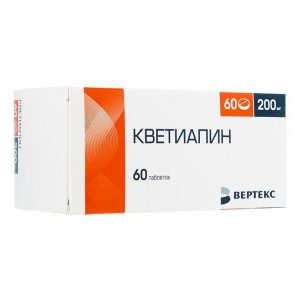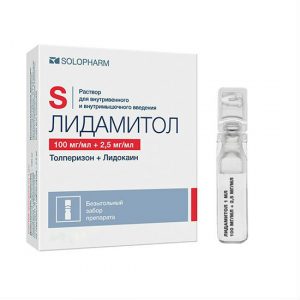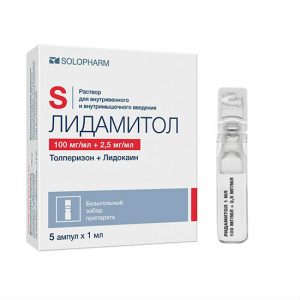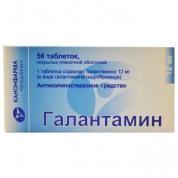Description
Latin name
Zeldox
Packing
30 capsules.
¤ °Ñ ¼ ° º ¾ » ¾ ³ ¸Ñ Ñ º ¾ ´ ¹ÑÑ ² ¸
» ´ ¾ ºÑ – ° ½Ñ ¸ ¿Ñ ¸Ñ ¾Ñ ¸Ñ Ñ º ¸ ¹ ¿Ñ ¿ °Ñ °Ñ , ½ ¹Ñ ¾ » ¿Ñ ¸ º.
– ÑÑ » ´ ¾ ² ° ½ ¸Ñ Ñ ²Ñ · ² ° ½ ¸Ñ Ñ Ñ Ñ ¿Ñ ¾Ñ ° ¼ ¸ ± » ° ´ ° Ñ ² Ñ ¾ º ¸ ¼ ÑÑ ¾ ´ÑÑ ² ¾ ¼ º ´ ¾ ¿ ° ¼ ¸ ½ ¾ ² ¼ D 2 -Ñ Ñ ¿Ñ ¾Ñ ° ¼ ¸ · ½ °Ñ ¸Ñ »Ñ ½ ¾ ± ¾ » ² Ñ ° ¶ ½ ½ ¼ ÑÑ ¾ ´ÑÑ ² ¾ ¼ º Ñ Ñ ¾Ñ ¾ ½ ¸ ½ ¾ ² ¼ 5HT 2A -Ñ Ñ ¿Ñ ¾Ñ ° ¼. ¸ ¿Ñ °Ñ ¸ ´ ¾ ½ ² · ° ¸ ¼ ¾ ´ ¹ÑÑ ²Ñ Ñ Ñ ° º ¶ Ñ Ñ Ñ ¾Ñ ¾ ½ ¸ ½ ¾ ² ¼ ¸ 5HT 2 ¡ -, 5HT ID -, 5HT 1A -Ñ Ñ ¿Ñ ¾Ñ ° ¼ ¸ ÑÑ ¾ ´ÑÑ ² ¾ ¿Ñ ¿ °Ñ °Ñ ° º ÑÑ ¸ ¼ Ñ Ñ ¿Ñ ¾Ñ ° ¼ Ñ ¾ ¿ ¾ÑÑ ° ² ¸ ¼ ¾ Ñ ¾ ÑÑ ¾ ´ÑÑ ² ¾ ¼ º D 2 -Ñ Ñ ¿Ñ ¾Ñ ° ¼ ¸ » ¸ ¿Ñ ² Ñ ° Ñ ³ ¾. ¸ ¿Ñ °Ñ ¸ ´ ¾ ½ ¾ ± » ° ´ ° Ñ Ñ ¼ Ñ ½ ½ ¼ ÑÑ ¾ ´ÑÑ ² ¾ ¼ º ½ ¹Ñ ¾ ½ ° »Ñ ½ ¼ ¿ Ñ ½ ¾ÑÑ ¸ º ° ¼ Ñ Ñ ¾Ñ ¾ ½ ¸ ½ ° ¸ ½ ¾Ñ ° ´Ñ ½ ° » ¸ ½ ° , ° Ñ ° º ¶ º ³ ¸ÑÑ ° ¼ ¸ ½ ¾ ² ¼ H 1 -Ñ Ñ ¿Ñ ¾Ñ ° ¼ ¸ 1 – ° ´Ñ ½ ¾Ñ Ñ ¿Ñ ¾Ñ ° ¼. ½Ñ ° ³ ¾ ½ ¸ · ¼ º ÑÑ ¸ ¼ Ñ Ñ ¿Ñ ¾Ñ ° ¼ Ñ ²Ñ · ² °ÑÑ Ñ ¾ ¾Ñ ² Ñ ÑÑ ² ½ ½ ¾ Ñ Ñ ¾ ½ » ¸ ² ¾ÑÑ ÑÑ ¸ ¾Ñ Ñ ¾ÑÑ °Ñ ¸Ñ Ñ º ¾ ¹ ³ ¸ ¿ ¾Ñ ½ · ¸ ¹ . ¸ ¿Ñ °Ñ ¸ ´ ¾ ½ ¿Ñ ° ºÑ ¸Ñ Ñ º ¸ ½ ² · ° ¸ ¼ ¾ ´ ¹ÑÑ ²Ñ Ñ Ñ ¼ÑÑ º °Ñ ¸ ½ ¾ ² ¼ ¸ ¼ 1 -Ñ ¾ » ¸ ½ ¾Ñ Ñ ¿Ñ ¾Ñ ° ¼ ¸, ¿Ñ ¾Ñ ² » ½ ¸ ° ½Ñ ° ³ ¾ ½ ¸ · ¼ ° º º ¾Ñ ¾Ñ ¼ Ñ ²Ñ · ² °ÑÑ Ñ ÑÑ Ñ ´Ñ ½ ¸ ¼ ¿ ° ¼ÑÑ ¸.
– ÑÑ » ´ ¾ ² ° ½ ¸Ñ ÑÑ ½ ºÑ ¸ ¸ Ñ Ñ ¿Ñ ¾Ñ ¾ ² ¸ ¿Ñ °Ñ ¸ ´ ¾ ½ Ñ ² »Ñ Ñ ÑÑ ° ½Ñ ° ³ ¾ ½ ¸ÑÑ ¾ ¼ º ° º Ñ Ñ ¾Ñ ¾ ½ ¸ ½ ¾ ² Ñ 5HT 2A -Ñ Ñ ¿Ñ ¾Ñ ¾ ², Ñ ° º ¸ ´ ¾ ¿ ° ¼ ¸ ½ ¾ ² Ñ D 2 -Ñ Ñ ¿Ñ ¾Ñ ¾ ². ½Ñ ¸ ¿Ñ ¸Ñ ¾Ñ ¸Ñ Ñ º °Ñ ° ºÑ ¸ ² ½ ¾ÑÑ Ñ ¿Ñ ¿ °Ñ °Ñ °, ¿ ¾- ² ¸ ´ ¸ ¼ ¾ ¼Ñ, Ñ °ÑÑ ¸Ñ ½ ¾ ¾ ±ÑÑ » ¾ ² » ½ ° ± » ¾ º ° ´ ¾ ¹ ¾ ± ¾ ¸Ñ Ñ ¸ ¿ ¾ ² Ñ Ñ ¿Ñ ¾Ñ ¾ ². ¸ ¿Ñ °Ñ ¸ ´ ¾ ½ Ñ ² »Ñ Ñ ÑÑ ¼ ¾Ñ ½ ¼ ° ½Ñ ° ³ ¾ ½ ¸ÑÑ ¾ ¼ 5HT 2 ¡ -, 5HT ID -Ñ Ñ ¿Ñ ¾Ñ ¾ ² ¸ ¼ ¾Ñ ½ ¼ ° ³ ¾ ½ ¸ÑÑ ¾ ¼ 5HT 1A -Ñ Ñ ¿Ñ ¾Ñ ¾ ² ¸ ¸ ½ ³ ¸ ± ¸Ñ Ñ Ñ ¾ ±Ñ °Ñ ½ ¹ · °Ñ ² °Ñ ½ ¾Ñ ° ´Ñ ½ ° » ¸ ½ ° ¸ Ñ Ñ ¾Ñ ¾ ½ ¸ ½ ° ² ½ ¹Ñ ¾ ½ °Ñ . ¡ Ñ ¾Ñ ¾ ½ ¸ ½ Ñ ³ ¸Ñ Ñ º °Ñ ° ºÑ ¸ ² ½ ¾ÑÑ Ñ · ¸ ¿Ñ °Ñ ¸ ´ ¾ ½ ° ¸ ³ ¾ ² » ¸Ñ ½ ¸ ½ ° ¾ ±Ñ °Ñ ½ ¹ · °Ñ ² °Ñ ½ ¹Ñ ¾Ñ Ñ ° ½Ñ ¼ ¸Ñ Ñ Ñ ¾ ² ² ½ ¹Ñ ¾ ½ °Ñ Ñ ²Ñ · ² °ÑÑ Ñ ° ½Ñ ¸ ´ ¿Ñ ÑÑ ¸ ² ½ ¾ ¹ ° ºÑ ¸ ² ½ ¾ÑÑ ÑÑ. » ¾ º ° ´ ° 5HT 1A – Ñ Ñ ¿Ñ ¾Ñ ¾ ² ¾ ±ÑÑ » ¾ ² » ¸ ² ° Ñ ° ½ ºÑ ¸ ¾ » ¸Ñ ¸Ñ Ñ º ¸ ¹ ÑÑÑ ºÑ · ¸ ¿Ñ °Ñ ¸ ´ ¾ ½ °. ¾Ñ ½ ¹ ° ½Ñ ° ³ ¾ ½ ¸ · ¼ º 5 ¢ 2 ¡ -Ñ Ñ ¿Ñ ¾Ñ ° ¼ ¾ ¿Ñ ´ »Ñ Ñ ° ½Ñ ¸ ¿Ñ ¸Ñ ¾Ñ ¸Ñ Ñ ºÑÑ ° ºÑ ¸ ² ½ ¾ÑÑ Ñ.
– ÑÑ » ´ ¾ ² ° ½ ¸Ñ Ñ ¿Ñ ¸ ¼ ½ ½ ¸ ¼ ¢ Ñ »Ñ ´ ¹ ¾ ´ ° ½ ½ ¼ ¿ ¾ · ¸Ñ Ñ ¾ ½ ½ ¾ ¹ Ñ ¼ ¸ÑÑ ¸ ¾ ½ ½ ¾ ¹ Ñ ¾ ¼ ¾ ³Ñ °Ñ ¸ ¸ ( ¢) ÑÑ ¿ ½Ñ ± » ¾ º ° ´ Ñ Ñ ¾Ñ ¾ ½ ¸ ½ ¾ ² Ñ 5HT 2A -Ñ Ñ ¿Ñ ¾Ñ ¾ ² Ñ Ñ · 12 Ñ ¿ ¾Ñ » ¾ ´ ½ ¾ ºÑ °Ñ ½ ¾ ³ ¾ ¿Ñ ¸ ¼ ° ¿Ñ ¿ °Ñ °Ñ ° ² ½ÑÑ Ñ Ñ ² ´ ¾ · 40 ¼ ³ Ñ ¾ÑÑ ° ² ¸ » ° 80%, ° ´ ¾ ¿ ° ¼ ¸ ½ ¾ ² Ñ D 2 -Ñ Ñ ¿Ñ ¾Ñ ¾ ² – 50%.
Indications
– Treatment for schizophrenia. The drug is effective in the treatment of productive and negative symptoms, as well as affective disorders (in patients receiving ziprasidone at a dose of 60 mg and 80 mg twice a day, a statistically significant improvement was noted on the MADRS scale (Montgomery – Asberg Depression Rating Scale – Montgomery Asberg) (p- Treatment of manic and mixed episodes caused by bipolar disorder with or without psychotic symptoms.
Contraindications
– Hypersensitivity to ziprasidone or any inactive component of the drug.
– History of lengthening of the QT interval, including congenital syndrome of the extended QT interval.
– Recently suffered acute myocardial infarction.
– Decompensated heart failure.
– Arrhythmias, requiring the intake of antiarrhythmic drugs IA and class III.
– Pregnancy.
– The period of breastfeeding.
– Lactose intolerance, lactase deficiency, glucose-galactose malabsorption.
– Co-administration of drugs that extend the QT interval, in particular antiarrhythmic drugs of classes IA and III, arsenic trioxide, halofantrine, methadone, mesoridazine, thioridazine, pimoside, sparfloxacin, gatifloxacin, moxifloxacin, dolasolindazron,
– Age to 18 years. The efficacy and safety of ziprasidone in patients under the age of 18 has not been studied.
Precautions:
– Use in cases of impaired liver function. In patients with mild or moderate hepatic impairment, it is advisable to reduce the dose of the drug. There is no experience with ziprasidone in patients with severe hepatic insufficiency, therefore, the drug should be used with caution in this group.
– QT interval. Ziprasidone causes a slight or moderate lengthening of the QT interval. It is believed that there is a relationship in the occurrence of a prolongation of the QT interval of more than 500 ms and paroxysmal ventricular arrhythmias (torsade des pointes). which is potentially life-threatening (some drugs, including antiarrhythmic drugs of IA and III class, cause a similar effect). Rare cases of the occurrence of such arrhythmias in patients with multiple mixed risk factors taking ziprasidone (post-marketing use) were noted, although a causal relationship with the drug was not established. Ziprasidone should be prescribed with caution to patients with the following risk factors, which may exacerbate the possibility of such arrhythmias: – Bradycardia.
– Electrolyte imbalance.
– Use with other drugs that extend the QT interval.
If the QT interval exceeds 500 ms, treatment is recommended to be discontinued.
Caution is required when treating patients with a history of seizures.
In patients with diabetes mellitus, after starting treatment with atypical antipsychotics, regular monitoring of blood glucose concentration is necessary. In the presence of risk factors for diabetes mellitus (in particular, obesity, the presence of diabetes mellitus in the family history) in patients who began treatment with atypical antipsychotics, fasting blood glucose should be determined at the time of initiation of such therapy and periodically during it. Monitoring of all patients receiving atypical antipsychotics is necessary for manifestations of hyperglycemia, including polydipsia, polyuria, polyphagia and weakness. With the development of these manifestations while taking atypical antipsychotics, it is necessary to determine the concentration of glucose in the blood on an empty stomach.
In some cases, hyperglycemia stops after the abolition of the atypical antipsychotic, however, some patients require continued hypoglycemic therapy even after the withdrawal of the alleged drug that caused this disorder.
Ziprasidone may cause arterial hypotension, accompanied by dizziness, tachycardia, and, in some patients, fainting, especially during the initial period of dose titration, which probably due to it 1 -adrenergic blocking activity. Cases of syncope were observed in 0.6% of patients receiving ziprasidone.
Aspiration pneumonia is a common condition that occurs in elderly patients, in particular, suffering from severe dementia due to Alzheimer’s disease. Ziprasidone and other antipsychotics should be used with caution in patients at risk of aspiration pneumonia.
Use in pregnancy and lactation
Use in pregnancy Studies in pregnant women have not been conducted. In this regard, women of reproductive age should use a reliable method of contraception. Given the limited experience in the use of the drug in humans, ziprasidone is not recommended for use during pregnancy.
Use in breast-feeding It is not known whether ziprasidone is excreted in breast milk. When treating women with ziprasidone, breast-feeding should be discarded.
Composition
1 capsule contains: active substance: ziprasidone hydrochloride monohydrate, which is equivalent to 60 mg of ziprasidone
excipients: lactose monohydrate, pregelatinized corn starch, magnesium stearate, eorpus and capsule cap: titanium dioxide, indigo carmine, gelatin, Tek SW-9008 ink: shellac, ethanol, isopropanol, butanol, butanol, isopropanol, butanol aqueous, potassium hydroxide, iron dye black oxide
Dosage and administration of
Ziprasidone is taken orally with food.
– In the treatment of acute schizophrenia and bipolar disorder: For adults, the recommended starting dose is 40 mg 2 times a day with meals. Subsequently, the dose is increased taking into account the clinical condition. The maximum daily dose of 160 mg (80 mg 2 times a day). If necessary, the daily dose can be increased to a maximum within 3 days. The average therapeutic dose of Zeldox is 120 mg, divided into two doses.
– As a supportive treatment for schizophrenia: Adults should be given the minimum effective dose in most cases, taking 20 mg of the drug 2 times a day is sufficient.
– Special Clinical Use Subsequently, the dose is increased taking into account the clinical condition. The maximum daily dose of 160 mg (80 mg 2 times a day). If necessary, the daily dose can be increased to a maximum within 3 days. The average therapeutic dose of Zeldox is 120 mg, divided into two doses.
– As a supportive treatment for schizophrenia: Adults should be given the minimum effective dose in most cases, taking 20 mg of the drug 2 times a day is sufficient.
– Special Clinical Use Subsequently, the dose is increased taking into account the clinical condition. The maximum daily dose of 160 mg (80 mg 2 times a day). If necessary, the daily dose can be increased to a maximum within 3 days. The average therapeutic dose of Zeldox is 120 mg, divided into two doses.
– As a supportive treatment for schizophrenia: Adults should be given the minimum effective dose in most cases, taking 20 mg of the drug 2 times a day is sufficient.
– Special Clinical Use Adults should be prescribed the minimum effective dose in most cases, it is enough to take 20 mg of the drug 2 times a day.
– Special Clinical Use Adults should be prescribed the minimum effective dose in most cases, it is enough to take 20 mg of the drug 2 times a day.
– Special Clinical Useradiation: Dose changes in the elderly (65 years and older), patients with impaired renal function, in smokers, is not required.
For the benefit of use, Zeldox is available in dosages: Zeldox caps. 40 mg 30 Pfizer Zeldox caps. 80 mg 30 Pfizer
Side effects of
From the side of the central nervous system and peripheral nervous system: asthenia, headache, extrapyramidal syndrome, insomnia or drowsiness, tremor, blurred vision, psychomotor agitation, akathisia, dizziness, dystonic reactions. Seizures were extremely rare (less than 1% of patients receiving ziprasidone). The Movement Disorder Burden Score, which reflects the severity of extrapyramidal symptoms when using ziprasidone, is significantly lower (p
Malignant Antipsychotic Syndrome (ANS): when using antipsychotics, cases of ANS have been observed, which is a rare but potentially fatal complication. Clinical manifestations of ANS are fever (hyperpyrexia), muscle stiffness, changes in mental status and instability of the autonomic nervous system (arrhythmia, changes in blood pressure, tachycardia, profuse sweating, heart rhythm disturbance). Additional symptoms may include increased levels of CPK, myoglobinuria (rhabdomyolysis), and acute renal failure. If symptoms appear that can be attributed to the signs of ZNS, or unexpectedly high body temperature, not accompanied by the occurrence of the remaining symptoms of ZNS, all antipsychotic drugs, including ziprasidone, should be immediately withdrawn.
Cases of ZNS are noted at a post-marketing application of Zeldoks.
Slow dyskinesia: with prolonged use of ziprasidone, like other antipsychotic drugs, there is a risk of developing slow dyskinesias and other long-term extrapyramidal syndromes. When signs of dyskinesia appear, it is advisable to reduce the dose of ziprasidone or cancel it.
From the digestive system: constipation, dry mouth, dyspepsia, increased salivation, nausea, vomiting.
Others: against the background of maintenance therapy with ziprasidone, an increase in prolactin levels was sometimes observed (in most cases, normalized without discontinuation of treatment), hypertension. It was reported that body weight fluctuated upward by an average of 0.5 kg with short-term use (within 4-6 weeks) and downwardly by 1-3 kg with long-term use (during the year) compared with patients who did not take the drug.
Drug Interaction
When co-administered with ziprasidone and drugs that cause QT prolongation (including class IA and III antiarrhythmic drugs), the risk of developing QT prolongation and paroxysmal ventricular tachycardia is increased (this combination is contraindicated).
When combined with ziprasidone with drugs that have CNS depressant effects, it may be mutually reinforcing (such a combination requires caution).
Ziprasidone has no inhibitory effect on isoenzymes of the cytochrome P450 1A2, 2C9 or 2C19 system. Ziprasidone concentrations that cause inhibition of CYP2D6 and CYP3A4 in vitro, but at least 1000 pa, exceeded the drug concentration that would be expected in vivo. This indicates that there is no likelihood of a clinically relevant interaction between ziprasidone and the drugs metabolized by these isoenzymes.
According to in vitro studies and clinical trial data from healthy volunteers, ziprasidone was shown to have no CYP2D6 mediated effect on the metabolism of dextromethorphan and its major metabolite dextrophane.
When combined with oral hormonal contraceptives, ziprasidone did not cause significant changes in the pharmacokinetics of estrogen, or ethinylestradiol (a CYP3A4 substrate), or progesterone-containing components.
Ziprasidone does not affect lithium pharmacokinetics when co-administered.
Ziprasidone is highly bound to plasma proteins. In vitro studies, warfarin and propranolol (high protein binding drugs) had no effect on the binding of ziprasidone to plasma proteins, and ziprasidone did not affect the binding of these drugs to plasma proteins. Thus, the possibility of drug interaction with ziprasidone owing to displacement from plasma proteins appears unlikely.
Ziprasidone is metabolized by aldehyde oxidase and, to a lesser extent, CYP3A4. Clinically relevant inhibitors or aldehyde oxidase inducers are unknown.
Co-administration with ketoconazole (400 mg / day) as a potential CYP3A4 inhibitor resulted in an increase of approximately 35% of ziprasidone AUC and Cmax, which is unlikely to be clinically relevant.
Co-administration with carbamazepine (200 mg 2 times / day) as CYP3A4 inducer, resulted in a 36% reduction in the AUC and Cmax of ziprasidone, which is unlikely to have clinical significance.
When combined with cimetidine, a nonspecific isoenzyme inhibitor had no significant effect on the pharmacokinetics of ziprasidone.
The concomitant administration of antacids containing aluminum and magnesium did not affect the pharmacokinetics of ziprasidone.
No clinically relevant effect of co-administration of propranolol and lorazepam on the pharmacokinetic parameters and serum ziprasidone concentration was found in clinical studies.
overdose – Symptoms: There is limited information on the overdose of ziprasidone. In pre-registration clinical trials, oral administration of the drug at the maximum confirmed dose (12800 mg) showed extrapyramidal manifestations in the patient, prolongation of the QT interval to 446 ms (without impaired cardiac function). The most common manifestations of overdose are: extrapyramidal disorders, drowsiness, tremor, anxiety.
– Treatment: in case of suspected overdose, the possible role of many drugs should be considered if the patient has received concomitant therapy. There is no specific antidote for ziprasidone. In case of acute overdose, the airway should be maintained and adequate ventilation and oxygenation should be provided. Gastric lavage (after intubation if the patient is unconscious) and activated charcoal in combination with a laxative are possible. Possible convulsions or dystonic reaction of the head and neck muscles after an overdose may create a risk of aspiration with induced vomiting. Monitoring of cardiovascular function, including continuous ECG monitoring, should be initiated immediately to detect possible arrhythmias. Given that ziprasidone is highly bound to plasma proteins, hemodialysis in case of overdose is ineffective.
Storage conditions
Store at a temperature not exceeding 30 ° C.
Keep out of the reach of children.
Expiration
4 years.
Deystvuyuschee substances
Zyprasydon
dosage form
dosage form
capsules




